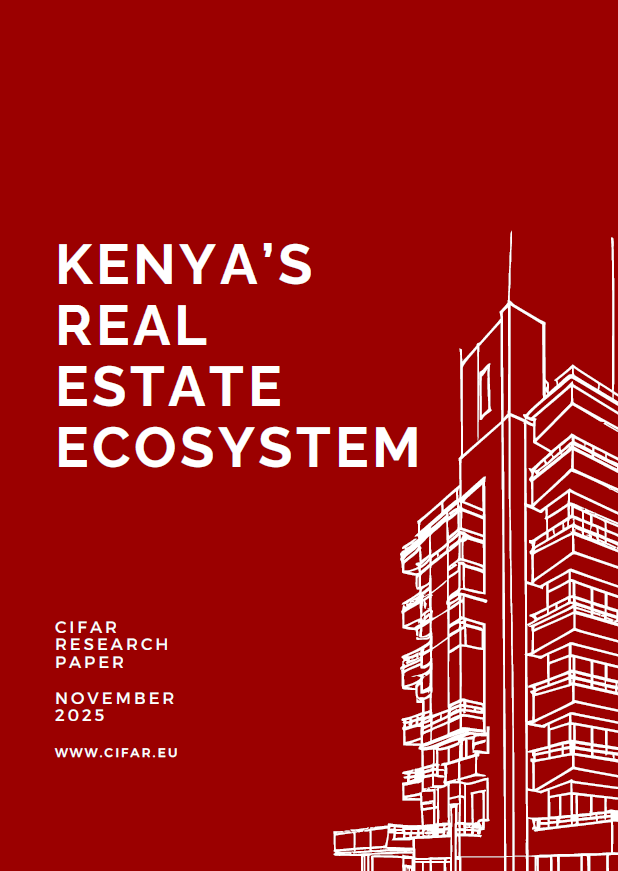Today we launch our latest report: Kenya’s Real Estate Ecosystem.
In 2022, Kenya underwent a Mutual Evaluation Review (MER) conducted by the Eastern and Southern Africa Anti-Money Laundering Group (ESAAMLG) to assess compliance with international standards set by the Financial Action Task Force (FATF). The review report, along with the National Risk Assessment (NRA), identified significant vulnerabilities across several sectors, ultimately resulting in Kenya’s grey-listing in 2024 due to strategic deficiencies in combating money laundering (AML) and terrorist financing (CFT).
The real estate sector was specifically flagged as high-risk, a status driven by investment linked to politically exposed persons (PEPs), the high and appreciating value of property which is ideal for concealing large proceeds of crime, and the difficulties associated with tracking and reporting cash-based transactions.
Kenya’s real estate ecosystem
In response to this, we have been undertaking research into the ability of Kenya’s real estate actors to prevent and react to the introduction of illicit finance into the property and land market, particularly in Nairobi and Mombasa.

Our latest report describes the key architecture current to 2025 that operates to prevent money laundering in the real estate sector in Kenya. It discusses the major players across five different categories of actors, the ways they work and the challenges they face. In doing so, it lays out the network that seeks to prevent and address money laundering into real estate in Kenya, as well as those actors seeking to introduce illicit finance into the sector or make it easier to do so.
These actors lie across: sellers, those selling real estate; intermediaries, those facilitating real estate transactions; buyers, those investing in real estate using illicit funds; influencers, those impacting the way other actors work or who seek to change law or policy for the sector; and rule makers, those actors setting and enforcing standards for the real estate sector. In totality, this is described as the real estate ecosystem.
While this paper focuses on describing the ecosystem as a whole and is not explicitly focussed on the challenges faced in preventing illicit finance entering the real estate market, which will be the subject of a further paper in this series, it is nevertheless apparent from the information that has been gathered that the ecosystem is:
- Extensive and complex: multiple actors are involved, have influence in and/or ensure legal compliance with AML/TF rules when it comes to each real estate transaction. The more complex the transaction, the more actors involved. Some of these actors where multiple hats: developers operating in some instances as sellers, influencers also acting as oversight bodies. Responding to illicit finance in the sector therefore requires a solid understanding of the different roles these actors play at each part of the process.
- The ecosystem is stronger on paper than in reality: resourcing issues were identified for several of the bodies supposed to provide oversight in the AML/TF context. In other instances, particularly real estate agents, the issue is coverage, with actors working outside of formal supervisory structures. While there are clear roles and responsibilities in law, reality is likely to undermine AML/CTF procedures.
- Subject to outside influence: While the research paper identifies that knowledge is limited, it indicates that the politics of land ownership and corruption in Kenya makes it hard for the system to act. This is likely to be the case even against money coming in from abroad.
About the project
This is part of a series of reports CiFAR is producing under the Corruption in Paradise research project. This project investigates how six tourism-focused cities/regions from Brazil, Kenya, and Indonesia address illicit finance in the real estate market.
The Corruption in Paradise research project is coordinated by GRIP (Public Integrity Research Group) at USI (Università della Svizzera italiana) and also includes FGVceapg (Center for Public Administration and Government Studies at the Getúlio Vargas Foundation’s São Paulo School of Business Administration) and the CACG (Center of Anti-Corruption and Governance Studies) at Politeknik STIA LAN Jakarta.
This research is part of the Governance & Integrity Anti-Corruption Evidence (GI ACE) programme which generates actionable evidence that policymakers, practitioners and advocates can use to design and implement more effective anti-corruption initiatives. This GI ACE project is funded by UK International Development.
Read our new report: Kenya’s Real Estate Ecosystem here.
What to go further into the topic? Read our previous briefing into anti-money laundering and the Kenyan real estate sector, looking at the legislative situation here.
